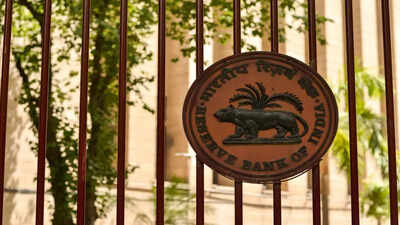Top Searches
- News
- Business News
- India Business News
- No risk of stagflation in India, say RBI officials
No risk of stagflation in India, say RBI officials

MUMBAI: India does not face any risk of stagflation, which is looming over several economies that are seeing weak growth and high inflation, according to a report published by the Reserve Bank of India (RBI) in its monthly bulletin. Another report in the bulletin said that there are indications of improvement of long-term growth prospects going by the prices at which government bonds are traded in the secondary market.
While the recovery momentum is strong and long-term growth prospects have improved, a third article in the bulletin calls for maintaining liquid reserves as portfolio outflows can rise to 7.7% of gross domestic product (GDP) in an extreme worst-case scenario.
The commentary from central bank officials in the bulletin, which is not an official view of the RBI, is in marked contrast to their peers worldwide. US Federal Reserve chief Jerome Powell on Wednesday warned of pain due to his measures to control inflation while the Fed’s UK counterpart, the Bank of England, warned that the economy would shrink by 0.3% in the second quarter and inflation would rise to above 11% in autumn.
The ‘state of the economy’ report in the RBI’s bulletin cites the World Bank caution on the risk of stagflation with potentially harmful consequences for low- and middle-income countries. “In the midst of this increasingly hostile external environment, India is better placed than many other countries in terms of avoiding the risks of a potential stagflation,” the report co-authored by RBI deputy governor Michael Patra said. It added that most of the constituents of GDP have surpassed pre-pandemic levels and domestic economic activity is gaining strength.
“With a growth rate of 8.7% in 2021-22, India’s GDP surpassed its pre-pandemic (2019-20) level by 1.5% and the recovery remains robust in 2022-23 so far. The year-on-year consumer price index (CPI) inflation print for May was lower than the previous month after seven months of continuous rise,” the report said.
The article on interpreting the government securities yield curve graph said that these are indicating an improvement in the long-term economic prospects of the country. “The yield curve is indicating an improvement in long-term growth prospects and an upshift in ex ante inflation expectations,” said the report authored by Patra.
According to the article, it is not just the slope of the yield curve but also the curvature that provides information on market expectations. “The yield curve is concave compared to 2019 levels, indicative of strengthening prospects for the recovery, higher inflation expectations and hence market expectations of front-loaded monetary policy normalisation,” the report said.
While the recovery momentum is strong and long-term growth prospects have improved, a third article in the bulletin calls for maintaining liquid reserves as portfolio outflows can rise to 7.7% of gross domestic product (GDP) in an extreme worst-case scenario.
The commentary from central bank officials in the bulletin, which is not an official view of the RBI, is in marked contrast to their peers worldwide. US Federal Reserve chief Jerome Powell on Wednesday warned of pain due to his measures to control inflation while the Fed’s UK counterpart, the Bank of England, warned that the economy would shrink by 0.3% in the second quarter and inflation would rise to above 11% in autumn.
The ‘state of the economy’ report in the RBI’s bulletin cites the World Bank caution on the risk of stagflation with potentially harmful consequences for low- and middle-income countries. “In the midst of this increasingly hostile external environment, India is better placed than many other countries in terms of avoiding the risks of a potential stagflation,” the report co-authored by RBI deputy governor Michael Patra said. It added that most of the constituents of GDP have surpassed pre-pandemic levels and domestic economic activity is gaining strength.
“With a growth rate of 8.7% in 2021-22, India’s GDP surpassed its pre-pandemic (2019-20) level by 1.5% and the recovery remains robust in 2022-23 so far. The year-on-year consumer price index (CPI) inflation print for May was lower than the previous month after seven months of continuous rise,” the report said.
The article on interpreting the government securities yield curve graph said that these are indicating an improvement in the long-term economic prospects of the country. “The yield curve is indicating an improvement in long-term growth prospects and an upshift in ex ante inflation expectations,” said the report authored by Patra.
According to the article, it is not just the slope of the yield curve but also the curvature that provides information on market expectations. “The yield curve is concave compared to 2019 levels, indicative of strengthening prospects for the recovery, higher inflation expectations and hence market expectations of front-loaded monetary policy normalisation,” the report said.
FOLLOW US ON SOCIAL MEDIA
FacebookTwitterInstagramKOO APPYOUTUBE
Looking for Something?

Start a Conversation
end of article










